
Maldonado: Uruguay's Coastal Gem
Discover Maldonado, a blend of colonial charm, stunning beaches, and vibrant culture, nestled on Uruguay's southeastern coast.
Maldonado, nestled along Uruguay's southeastern coast, is a city where history and modernity blend seamlessly. Known for its colonial charm and vibrant culture, Maldonado offers a rich tapestry of experiences for every traveler. The city boasts an array of architectural wonders, including the iconic Catedral de San Fernando and the charming Plaza San Fernando, which transports visitors back to the colonial era with its cobblestone streets and historic buildings. Beyond its historical allure, Maldonado is a gateway to some of Uruguay's most stunning beaches. Playa Mansa and Playa Brava are perfect for sunbathing, surfing, and enjoying the Atlantic Ocean's pristine waters. The nearby Punta del Este, often referred to as the St. Tropez of South America, adds a touch of glamour with its upscale resorts, vibrant nightlife, and designer boutiques. Nature enthusiasts will find solace in the city's green spaces, such as the Arboretum Lussich, a vast botanical garden home to a diverse range of flora from around the world. The Laguna del Sauce, a serene lagoon, offers opportunities for birdwatching, kayaking, and simply unwinding in nature's embrace. Maldonado's culinary scene is a delightful journey through Uruguayan flavors. From traditional asados to fresh seafood, the city's restaurants and eateries cater to every palate. Don't miss the chance to savor local delicacies at the Mercado del Puerto, where the bustling atmosphere and aromatic dishes create an unforgettable dining experience.
Local tips in Maldonado
- Visit in the summer months (December to March) for the best beach weather.
- Rent a bike to explore the city's historic center and nearby attractions.
- Try local wines and the famous Uruguayan beef at traditional parrillas.
- Pack comfortable walking shoes for exploring cobblestone streets and natural parks.
- Check local schedules for cultural festivals, particularly during Carnival season.
Maldonado: Uruguay's Coastal Gem
Maldonado, nestled along Uruguay's southeastern coast, is a city where history and modernity blend seamlessly. Known for its colonial charm and vibrant culture, Maldonado offers a rich tapestry of experiences for every traveler. The city boasts an array of architectural wonders, including the iconic Catedral de San Fernando and the charming Plaza San Fernando, which transports visitors back to the colonial era with its cobblestone streets and historic buildings. Beyond its historical allure, Maldonado is a gateway to some of Uruguay's most stunning beaches. Playa Mansa and Playa Brava are perfect for sunbathing, surfing, and enjoying the Atlantic Ocean's pristine waters. The nearby Punta del Este, often referred to as the St. Tropez of South America, adds a touch of glamour with its upscale resorts, vibrant nightlife, and designer boutiques. Nature enthusiasts will find solace in the city's green spaces, such as the Arboretum Lussich, a vast botanical garden home to a diverse range of flora from around the world. The Laguna del Sauce, a serene lagoon, offers opportunities for birdwatching, kayaking, and simply unwinding in nature's embrace. Maldonado's culinary scene is a delightful journey through Uruguayan flavors. From traditional asados to fresh seafood, the city's restaurants and eateries cater to every palate. Don't miss the chance to savor local delicacies at the Mercado del Puerto, where the bustling atmosphere and aromatic dishes create an unforgettable dining experience.
When is the best time to go to Maldonado?
Iconic landmarks you can’t miss
The Fingers of Punta del Este
Explore the iconic Fingers of Punta del Este, a stunning sculpture blending art and nature on the beautiful Uruguayan coast.

Castillo Pittamiglio Las Flores
Discover the enchanting Castillo Pittamiglio in Maldonado, a historical landmark that blends beautiful architecture with rich cultural heritage.

Fundación Pablo Atchugarry
Explore Fundación Pablo Atchugarry, a premier art museum in Uruguay offering stunning exhibitions and a tranquil park setting amidst contemporary masterpieces.

Museo del Mar
Explore the rich maritime heritage of Uruguay at Museo del Mar, a unique museum offering captivating exhibits and stunning ocean views.

Great Britain Square
Experience the vibrant culture and serene beauty of Great Britain Square, a must-visit destination in Punta del Este, Uruguay.

Laguna Garzón Bridge
Discover the breathtaking Laguna Garzón Bridge, a stunning architectural feat nestled in the serene landscapes of Maldonado, Uruguay.

Peatonal Sarandí
Explore Peatonal Sarandí, the vibrant shopping mall in Maldonado, offering local shops, delicious eateries, and a lively cultural atmosphere.

Tambo Lapataia Punta Del Este
Discover the essence of Uruguay at Tambo Lapataia, where farm-fresh flavors meet a serene rural landscape in Punta Del Este.

Punta Ballena Lookout Point
Discover the stunning panoramic views at Punta Ballena Lookout Point, a must-visit destination in Maldonado, Uruguay for every nature lover and adventurer.

Museo Ralli Punta del Este
Explore Museo Ralli in Punta del Este for a captivating journey through Latin American contemporary art, featuring works by iconic artists like Salvador Dalí.

Paseo de La Aguada
Explore the tranquil beauty of Paseo de La Aguada, a scenic park in Maldonado, ideal for relaxation, leisure activities, and cultural experiences.

Plaza Torre del Vigia
Explore Plaza Torre del Vigia in Maldonado, a tranquil city park blending lush greenery with iconic historical views.

Cachimba del Rey
Discover the fascinating history and breathtaking views at Cachimba del Rey, a must-visit historical landmark in Maldonado, Uruguay.

Ruta Panorámica Carlos Páez Vilaró
Explore the stunning Ruta Panorámica Carlos Páez Vilaró in Punta Ballena, where breathtaking ocean views and artistic inspiration meet.

Azotea de Haedo
Discover the rich history and art of Uruguay at Azotea de Haedo, a captivating museum in the heart of Punta del Este, perfect for culture enthusiasts.

Unmissable attractions to see
The Fingers of Punta del Este
Explore the stunning Fingers of Punta del Este, a surreal sculpture on Brava Beach that captivates visitors with its artistic beauty and breathtaking coastal views.

Enjoy Punta del Este Resort y Casino
Experience luxury and entertainment at Enjoy Punta del Este Resort y Casino, your ultimate getaway in the heart of Punta del Este.

El Jagüel Park
Explore the tranquil beauty of El Jagüel Park, a lush green escape in Punta del Este, ideal for relaxation, outdoor fun, and cultural experiences.

Museo Casapueblo
Explore the artistic wonder of Museo Casapueblo, a unique museum and cultural venue nestled along the stunning coastline of Punta Ballena.

Castillo Pittamiglio Las Flores
Experience the artistic legacy and enchanting architecture of Castillo Pittamiglio, a historical landmark in the heart of Las Flores.

Francisco Piria Castle
Explore the captivating Francisco Piria Castle in Piriápolis, a historical gem featuring stunning architecture and rich cultural heritage.
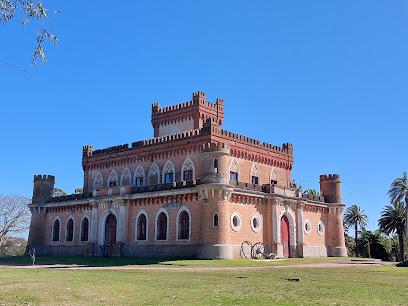
Fundación Pablo Atchugarry
Experience the fusion of art and nature at Fundación Pablo Atchugarry, an artistic gem in Uruguay's Maldonado Department.

Punta Ballena
Discover Punta Ballena, a stunning coastal escape in Uruguay known for its breathtaking views, lush parks, and vibrant local culture.

Puerto de Punta del Este
Explore the stunning Puerto de Punta del Este, a vibrant seaport in Uruguay known for its breathtaking views, fresh seafood, and exciting water sports.
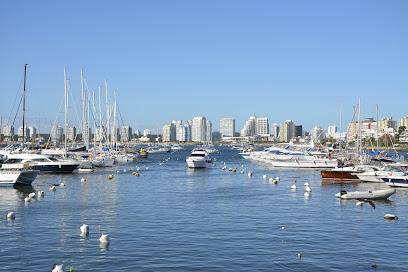
Las Grutas
Discover the beauty and flavors of Punta Ballena at Las Grutas, a coastal must-visit featuring stunning ocean views and exquisite local cuisine.

Museo del Mar
Discover the captivating maritime heritage of Uruguay at Museo del Mar in La Barra, featuring engaging exhibits and stunning artifacts.

Municipal la Cascada Park
Explore the natural beauty and tranquility of Municipal la Cascada Park in Piriápolis, a perfect getaway for nature lovers and adventure seekers.

Rambla Piriapolis
Experience the beauty of nature and vibrant culture at Rambla Piriapolis, a coastal promenade that enchants every visitor.

Arboretum Lussich
Experience the tranquility and beauty of Arboretum Lussich, a lush botanical garden in Maldonado, Uruguay, perfect for nature lovers.

Punta Ballena Lookout Point
Discover the breathtaking views of Punta Ballena Lookout Point, a stunning observation deck with a cozy espresso bar overlooking the Atlantic Ocean.

Essential places to dine
Classic Parrillada
Experience the best of Uruguayan cuisine with mouthwatering grilled meats at Classic Parrillada in Maldonado.

Capi Bar
Experience the vibrant atmosphere and exceptional craft beers at Capi Bar in Punta del Este – where flavor meets fun!

CH Parrilla con Historia
Discover the authentic flavors of Argentinian cuisine at CH Parrilla con Historia - where every meal tells a story.
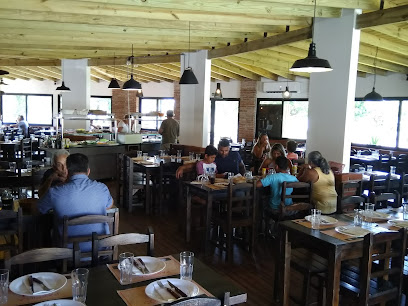
Sumo resto cafe
Experience delicious fast food at Sumo Resto Cafe in Maldonado - perfect for tourists craving quality meals on-the-go.

Parrillada Don Joaquín
Savor the essence of Uruguayan cuisine at Parrillada Don Joaquín - where every bite tells a story.

Parrillada La Balanza
Experience authentic Uruguayan grill at Parrillada La Balanza in Maldonado - where tradition meets flavor.

El Secreto
Discover El Secreto: A premier sushi fusion restaurant in Punta del Este offering fresh flavors and stunning ocean views.

Rustic resto bar
Discover the charm of Rustic Resto Bar in Punta del Este—where delicious food meets a welcoming atmosphere.

Parrillada Lo de Ruben
Discover authentic Uruguayan barbecue at Parrillada Lo de Ruben in Maldonado - a true feast for meat lovers!

Garní Restaurante/solo con reservas
Discover the culinary delights of Garní Restaurante in Balneario Solís – where local flavors meet modern dining in a stunning coastal setting.

481 Gourmet
Discover the flavors of Uruguay at 481 Gourmet in Punta del Este – where exquisite grilling meets boutique quality.

Nuevo Oasis
Discover the essence of Uruguayan cuisine at Nuevo Oasis in Maldonado – where tradition meets taste in every dish.

El Poligrillo
Discover authentic Uruguayan cuisine at El Poligrillo in Maldonado – where every dish tells a story.

La Posta de Vaimaca
Discover authentic Uruguayan flavors at La Posta de Vaimaca in El Edén - where every dish tells a story.

Yes Dear
Experience exquisite dining at Yes Dear in Maldonado – where traditional flavors meet modern creativity in every dish.
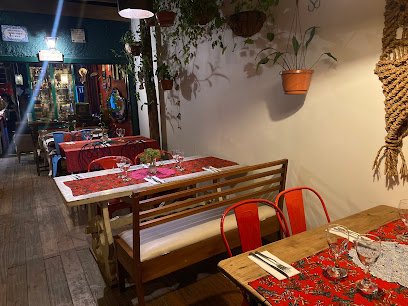
Markets, malls and hidden boutiques
East Outlet
Experience the best of shopping and dining at East Outlet in Maldonado, where retail therapy meets delightful culinary adventures.
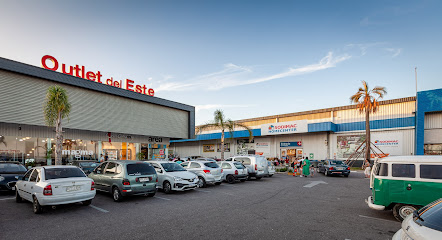
Guapa! Maldonado
Discover the latest trends in women's fashion at Guapa! Maldonado, where style meets elegance in the heart of Uruguay.

Boutique Angeles
Discover the latest in women's fashion at Boutique Angeles, a stylish haven in the heart of Maldonado, Uruguay.

Outlet punta del este
Experience the ultimate shopping and dining destination at Outlet Punta del Este, where luxury meets affordability in a vibrant atmosphere.

Lolita Maldonado
Explore unique contemporary fashion at Lolita Maldonado, a premier clothing store in the heart of Maldonado, Uruguay, offering stylish apparel for every occasion.

Antolina Second Hand
Explore sustainable fashion at Antolina Second Hand in Maldonado, where unique styles and eco-friendly choices meet.

Galería Paseo Real
Discover the vibrant Galería Paseo Real in Maldonado, a shopping haven featuring diverse stores, dining, and entertainment options.

Misueniounduende
Explore Misueniounduende in Maldonado for unique gifts and high-quality aromatherapy products that capture the essence of Uruguay.

Boutique Erótica Maldonado
Explore a world of pleasure and intimacy at Boutique Erótica Maldonado, the ultimate destination for adult entertainment in Punta del Este.

N&A Regalos
Explore N&A Regalos in Maldonado for unique gifts, fashion accessories, and exquisite jewelry that capture the essence of local craftsmanship.
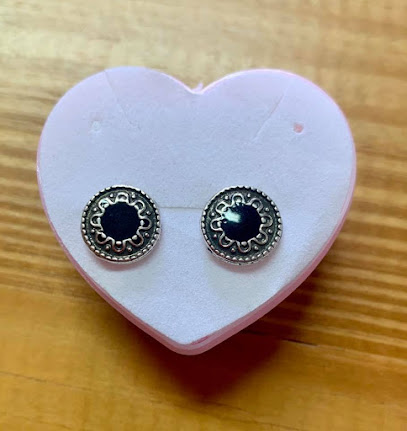
Si, Quiero
Discover unique women's clothing at Si, Quiero in Maldonado, a vibrant shopping destination reflecting local Uruguayan fashion trends.

Sysublimaciones
Explore Sysublimaciones in Maldonado for unique gifts and personalized souvenirs that capture the local spirit and charm of Uruguay.

Space Store
Discover unique gifts and local crafts at Space Store in Maldonado, a charming gift shop perfect for tourists seeking memorable souvenirs.

Juanita Accesorios
Explore Juanita Accesorios in Maldonado for unique, locally crafted gifts that embody the essence of Uruguayan culture and artistry.
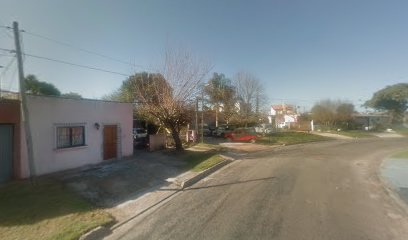
The Mug Store Uruguay
Explore unique souvenirs at The Mug Store Uruguay, where every mug tells a story and captures the essence of your travels.

Essential bars & hidden hideouts
Pirataz Bar
Discover the vibrant nightlife and delicious cuisine at Pirataz Bar, a premier gastropub in Maldonado perfect for food lovers and night owls.

Alligator Bar
Discover the lively Alligator Bar in Maldonado, where local culture and vibrant nightlife come together for an unforgettable experience.

The Bar
Experience the vibrant flavors of Uruguayan cuisine at The Bar in Maldonado, where grilling meets local charm for an unforgettable night out.

La Curandería
Experience the vibrant nightlife of Maldonado at La Curandería, a lively live music bar that showcases local talent and a welcoming atmosphere.

El Pool Ingles
Discover the vibrant nightlife at El Pool Ingles in Maldonado, where friendly service meets an unforgettable atmosphere.

Tarzan Bier
Experience the lively brewpub scene at Tarzan Bier, where craft beers and great company come together in the heart of Maldonado.

Apache
Experience the vibrant nightlife of Maldonado at Apache, a lively bar offering a variety of drinks and local entertainment.

La Patrona
Discover La Patrona, a lively bar and restaurant in Maldonado offering gourmet cuisine, craft cocktails, and vibrant live music, perfect for an unforgettable night out.

EstiloBar Maldonado
Discover the lively EstiloBar Maldonado, a top gastropub offering an eclectic menu and vibrant atmosphere in the heart of Maldonado.
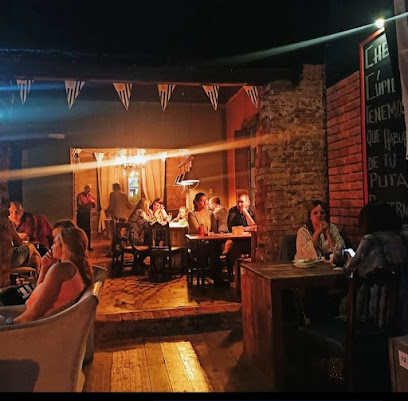
Hawani Bar
Discover the vibrant nightlife at Hawani Bar in Maldonado, where great drinks and a lively atmosphere create unforgettable memories.

Charles Bar
Discover the vibrant atmosphere of Charles Bar in Maldonado, where locals and tourists mingle over drinks in a lively setting.
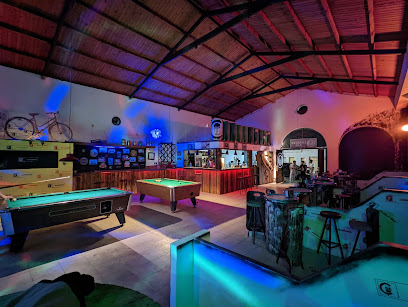
Bar Havana
Experience the lively atmosphere of Bar Havana, a premier bar and nightclub in Maldonado, perfect for an unforgettable night out.

U2 Bar & Lounge
U2 Bar & Lounge: A lively tapas bar and nightclub in Maldonado, offering a vibrant atmosphere and delicious small plates for an unforgettable night out.
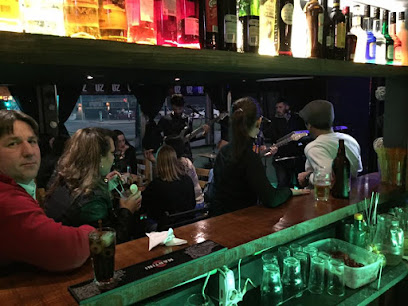
8 Monos Bar
Discover the enchanting ambiance and live music at 8 Monos Bar in Maldonado, a perfect spot for an unforgettable night out.

After Coffee & Drinks
Discover the vibrant atmosphere of After Coffee & Drinks in Maldonado, a perfect bar for relaxation and socializing with a great selection of beverages.

Local Phrases
-
- HelloHola
[oh-lah] - GoodbyeAdiós
[ah-dee-ohs] - YesSí
[see] - NoNo
[noh] - Please/You're welcomePor favor/De nada
[por fah-vor/deh nah-dah] - Thank youGracias
[grah-syahs] - Excuse me/SorryPerdón
[pair-dohn] - How are you?¿Cómo estás?
[koh-moh ehs-tahs] - Fine. And you?Bien. ¿Y tú?
[byen. ee too] - Do you speak English?¿Hablas inglés?
[ah-blahs een-gles] - I don't understandNo entiendo
[noh ehn-tyen-doh]
- HelloHola
-
- I'd like to see the menu, pleaseMe gustaría ver el menú, por favor
[may goos-tah-ree-ah vehr ehl meh-noo, poor fah-vor] - I don't eat meatNo como carne
[noh koh-moh kahr-neh] - Cheers!¡Salud!
[sah-lood] - I would like to pay, pleaseMe gustaría pagar, por favor
[may goos-tah-ree-ah pah-gahr, poor fah-vor]
- I'd like to see the menu, pleaseMe gustaría ver el menú, por favor
-
- Help!¡Ayuda!
[ah-yoo-dah] - Go away!¡Vete!
[veh-teh] - Call the Police!¡Llama a la policía!
[yah-mah ah lah poh-lee-see-ah] - Call a doctor!¡Llama a un médico!
[yah-mah ah oon meh-dee-koh] - I'm lostEstoy perdido
[ehs-toy pair-dee-doh] - I'm illEstoy enfermo
[ehs-toy ehn-fehr-moh]
- Help!¡Ayuda!
-
- I'd like to buy...Me gustaría comprar...
[may goos-tah-ree-ah kohm-prahr...] - I'm just lookingSolo estoy mirando
[soh-loh ehs-toy meer-ahn-doh] - How much is it?¿Cuánto cuesta?
[kwan-toh kwes-tah] - That's too expensiveEso es demasiado caro
[eh-soh ehs deh-mah-see-ah-doh kah-roh] - Can you lower the price?¿Puedes bajar el precio?
[pweh-dehs bah-hahr ehl preh-see-oh]
- I'd like to buy...Me gustaría comprar...
-
- What time is it?¿Qué hora es?
[keh oh-rah ehs] - It's one o'clockEs la una en punto
[ehs lah oo-nah ehn poon-toh] - Half past (10)Media (10)
[meh-dyah (dheez)] - MorningMañana
[mah-nyah-nah] - AfternoonTarde
[tahr-deh] - EveningNoche
[noh-cheh] - YesterdayAyer
[ah-yehr] - TodayHoy
[oy] - TomorrowMañana
[mah-nyah-nah] - 1Uno
[oo-noh] - 2Dos
[dohs] - 3Tres
[trehs] - 4Cuatro
[kwah-troh] - 5Cinco
[seen-koh] - 6Seis
[says] - 7Siete
[syeh-teh] - 8Ocho
[oh-choh] - 9Nueve
[nweh-veh] - 10Diez
[dyehs]
- What time is it?¿Qué hora es?
-
- Where's a/the...?¿Dónde está...?
[dohn-deh ehs-tah] - What's the address?¿Cuál es la dirección?
[kwal ehs lah dee-rehk-syohn] - Can you show me (on the map)?¿Puedes mostrarme (en el mapa)?
[pweh-dehs mohs-trar-meh (ehn ehl mah-pah)] - When's the next (bus)?¿Cuándo es el próximo (autobús)?
[kwan-doh ehs ehl proh-ksee-moh (ow-toh-boos)] - A ticket (to ....)Un boleto (a ...)
[oon boh-leh-toh (ah ...)]
- Where's a/the...?¿Dónde está...?
History of Maldonado
-
Maldonado was officially founded on October 19, 1755, by Spanish Governor Joaquin de Viana. The town was established as a strategic point to counteract Portuguese expansion in the region. Its location near the coast made it an ideal spot for monitoring maritime activities and securing Spanish interests in the Rio de la Plata area.
-
In 1806 and 1807, the British attempted to capture Buenos Aires and Montevideo during the Anglo-Spanish War. Maldonado played a crucial role during these invasions as a strategic point of defense. Local forces, alongside Spanish troops, worked tirelessly to repel the British forces, highlighting the town's importance in regional military efforts.
-
As part of the Viceroyalty of the Rio de la Plata, Maldonado was under Spanish colonial rule. The town served as a significant administrative and military hub during this period, contributing to the broader efforts to consolidate Spanish control over the Southern Cone of South America.
-
In the early 20th century, the coastal area of Punta del Este, part of the Maldonado Department, began to develop as a major tourist destination. The region's stunning beaches and favorable climate attracted visitors from around the world, transforming Punta del Este into one of South America's premier resort towns. This development significantly boosted the local economy and positioned Maldonado as a key player in Uruguay's tourism industry.
-
Maldonado is home to a wealth of Spanish colonial architecture, reflecting its historical roots. Notable landmarks include the San Fernando de Maldonado Cathedral, which dates back to the 19th century, and the Cuartel de Dragones, a former military barracks that now serves as a museum. These structures provide a glimpse into the town's colonial past and its evolution over the centuries.
-
Prior to Spanish colonization, the area now known as Maldonado was inhabited by indigenous peoples, including the Charrúa and Guarani. These groups played a crucial role in shaping the region's early history and culture. Artifacts and historical records indicate a rich indigenous heritage that continues to influence local traditions and cultural practices.
-
Maldonado was an active participant in the fight for Uruguay's independence from Spanish rule. The town's residents supported revolutionary efforts led by figures such as José Gervasio Artigas and Juan Antonio Lavalleja. Maldonado's strategic location and committed populace made it a valuable contributor to the broader struggle for national sovereignty, which culminated in Uruguay's independence in 1828.
Maldonado Essentials
-
Maldonado is located in the southeastern part of Uruguay. The nearest international airport is Carrasco International Airport in Montevideo, approximately 130 kilometers away. From Montevideo, you can take a bus operated by companies such as COT or COPSA to Maldonado, which takes about 2 hours. Alternatively, you can rent a car and drive via Route Interbalnearia, offering scenic views of the coastline.
-
Maldonado is well-serviced by a network of buses that connect various parts of the city and nearby areas, including Punta del Este. Taxis are readily available and can be hailed on the street or booked via phone applications. If you prefer more flexibility, car rental services are available. Bicycles are also a popular mode of transport, especially for exploring the coastal areas.
-
The official currency in Uruguay is the Uruguayan Peso (UYU). Credit cards are widely accepted in hotels, restaurants, and shops, but it's advisable to carry some cash for smaller establishments and markets. ATMs are widely available, and you can withdraw cash using international debit or credit cards. Currency exchange services are available at banks and exchange bureaus.
-
Maldonado is generally a safe destination for tourists. However, it's advisable to take precautions, such as avoiding poorly lit areas at night and not flaunting valuables. Areas with higher crime rates targeting tourists include some parts of the city center and the bus terminal area. It's best to stay vigilant and aware of your surroundings.
-
In case of emergency, dial 911 for immediate assistance. The local police station and medical facilities are available in Maldonado. It is recommended to have travel insurance that covers medical emergencies. For minor health issues, there are pharmacies where you can purchase over-the-counter medications. The main hospital in the area is Hospital de Maldonado.
-
Fashion: Do dress comfortably but modestly, especially in more traditional settings. Avoid overly casual attire in upscale restaurants. Religion: Do respect local customs and traditions. Be quiet and respectful when visiting churches. Public Transport: Do be courteous and offer your seat to elderly passengers. Don't play loud music or eat on public transport. Greetings: Do greet people with a handshake or a friendly 'Hola'. A kiss on the cheek is common among friends. Eating & Drinking: Do try local delicacies and be open to new flavors. Don't rush through meals; dining is often a leisurely activity.
-
To experience Maldonado like a local, visit the local markets where you can buy fresh produce and traditional Uruguayan goods. Engage with locals, as they are often friendly and willing to share stories about the area's history and culture. Don't miss visiting the famous Casapueblo, a museum and hotel designed by artist Carlos Páez Vilaró. For a unique experience, take a walk or bike ride along the scenic Rambla de Maldonado, offering beautiful views of the coastline.
Trending Landmark in Maldonado
-
The Fingers of Punta del Este
-
Castillo Pittamiglio Las Flores
-
Fundación Pablo Atchugarry
-
Museo del Mar
-
Great Britain Square
-
Laguna Garzón Bridge
-
Peatonal Sarandí
-
Tambo Lapataia Punta Del Este
-
Punta Ballena Lookout Point
-
Museo Ralli Punta del Este
-
Paseo de La Aguada
-
Plaza Torre del Vigia
-
Cachimba del Rey
-
Ruta Panorámica Carlos Páez Vilaró
-
Azotea de Haedo
Nearby Cities to Maldonado
-
Things To Do in Punta del Este
-
Things To Do in Montevideo
-
Things To Do in Colonia del Sacramento
-
Things To Do in La Plata
-
Things To Do in Buenos Aires
-
Things To Do in Fray Bentos
-
Things To Do in Tacuarembó
-
Things To Do in Mar del Plata
-
Things To Do in Rosario
-
Things To Do in Encarnacion
-
Things To Do in Carmen del Parana
-
Things To Do in Córdoba
-
Things To Do in Florianópolis
-
Things To Do in Villarrica
-
Things To Do in Puerto Iguazú












